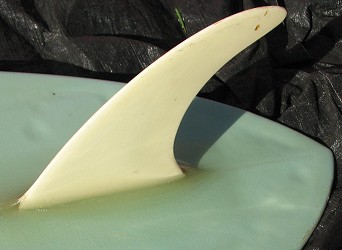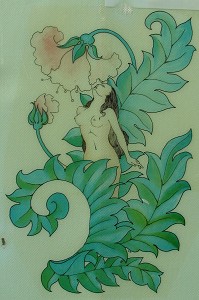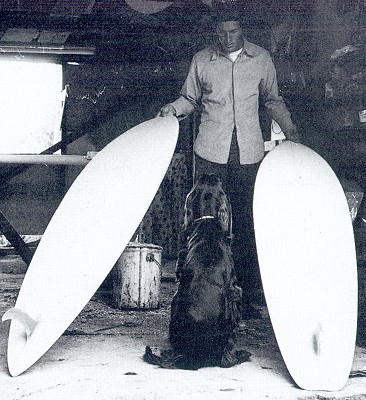
surfresearch.com.au
the catalogue #356
the catalogue #356
| home | catalogue | history | references | appendix |
 |
surfresearch.com.au
the catalogue #356 |
| 1979 Nat Young Surf Design Pintail 6 ft 5" Shaped by Nat Young | #356 |

|
Length :
|
6
|
ft | 4 |
inches | L2: | 6ft 3 1/2'' |
|
Width :
|
20 1/4
|
inches |
Wide Point :
|
0
|
inches | |
|
Nose :
|
12
|
inches |
Tail :
|
14 1/2
|
inches | |
|
Thickness :
|
3
|
inches |
Pod :
|
0
|
inches | |
|
Nose Lift :
|
inches |
Tail Lift :
|
inches | |||
|
Weight :
|
kilos |
Volume :
|
litres | |||
|
Other :
|
inches |
| FIN 7 1/2' x 6 1/2" base x 9 1/4'' span @ 7 inches . White laminate. This is unlikely to be the original fin, see Comments. An example of Nat's standard laminated Greenough Stage IV fin is shown below. |
 |
| DECOR DECAL Deck: Nat Young Surf Design black script along the stringer foreward of the sweet spot. Bottom: Nat Young Surf Design black script along the stringer on the nose and large Lady/flower illustration at the sweet spot . MARKINGS Deck: NAT (in italics) and #91 6'4''x 20 1/4'', pencil at tail Bottom: COLOUR Deck: clear with blue rail overlaps Bottom:
blue pigment laminate, and extensive nose repairs with
a blue pigment gel coat.

 |
 |










 |
Skydog and Backhand Square Tail, circa 1971 Photograph : Alby Falzon
|


| home | catalogue | history | references | appendix |